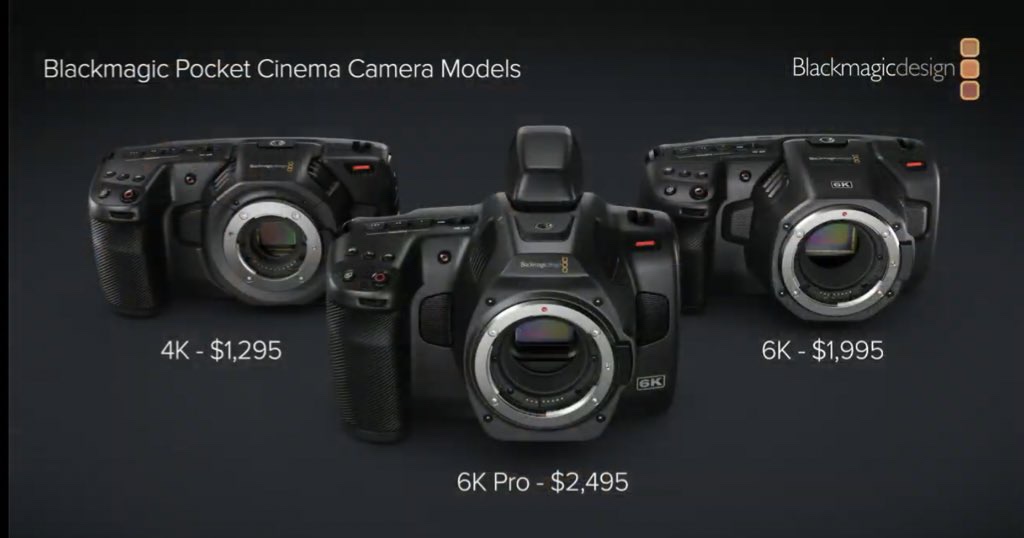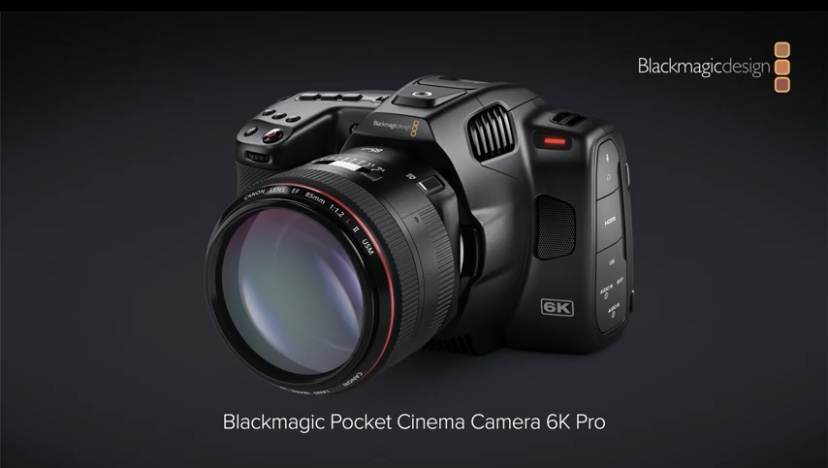Blackmagic finally adds key features to the Blackmagic Pocket Cinema Camera 6K Pro. Features like internal ND, 2 XLR mini audio inputs, a tilt-able LCD screen, a brighter LCD screen, and an added electronic viewfinder. We have the same 6K sensor and, essentially, a slightly bigger body style in the 6K Pro than the 6K, but Blackmagic Design needed to make room for all the new features. 
As snow dropped from battleship gray skies over Nashville, the family and I ventured outside to build the snowy season’s first snowman. This after rounds of work covering the ice and snow as a staff photographer. I grabbed my trusty Blackmagic Pocket Cinema Camera 4K with me and a Meike 16mm lens; I felt the need to find a lighter camera. As we packed snow into a somewhat snowman shape, I occasionally paused to shoot a little video. The thought of new, more usable features in a Blackmagic Pocket Cinema Camera struck me.
Of course, an electronic viewfinder would make shooting easier. Of course, a 1500nit bright LCD monitor would make shooting easier. Of course, internal neutral density would make shooting easier, and on and on it went. I became excited to test the new Blackmagic Pocket Cinema Camera 6K Pro and its tiltable screen and longer battery runtimes because I know those features make my life easier as a shooter.
2013, I reviewed the first Pocket Cinema Camera. The camera came with a small rear LCD screen, and like all Blackmagic Design cameras, it could record video raw. In time, accessory makers built a loupe for the pocket-sized camera and its LCD screen. Now, we have all sorts of accessories to make the Pocket 4K and Pocket 6K easier to use. Like the first Pocket Cinema Camera, I think the Blackmagic Pocket Cinema Camera 6K Pro may be too. The camera may be a hit without the need to accessory it, which saves us money.
Blackmagic Design has an innate ability to thread a market’s needle to find an untapped niche. The original Cinema Camera and Pocket Cinema Camera did this; the URSA Mini did this, and the URSA Mini Pro 12K did too. Like, we didn’t know we needed or wanted HD raw video until Blackmagic made an option available. We didn’t think we needed or wanted 12K until Blackmagic made an option.
What the Blackmagic Pocket Cinema Camera 6K Pro does is reshuffles the camera market. Suddenly, the $2495 Pocket 6K Pro and its $495 EVF combination are competitors to a Red Komodo or a Canon C70. At least in my mind, those two cameras are competitors now. Both those cameras come with an S35mm sized sensor but have different lens mounts and autofocus features. I wouldn’t say I like comparing cameras. It isn’t fair to either the shooter or the camera.
So how does the Blackmagic Pocket Cinema Camera 6K Pro thread a flooded camera market needle? The low price for 6K raw video and the ability to pick up a Pocket Cinema Camera 6K Pro and shoot without too many accessories is a big plus. I feel like the only necessary accessory for the Pocket Cinema Camera 6K Pro is Blackmagic’s optional EVF. One can throw on a lens and go out shooting their next project.
Pocket 6K Pro EVF
Why is an electronic viewfinder essential on a Pocket Cinema Camera? Three points of contact help stabilize body movement better. A right hand on the right grip, a left hand cradling the lens, and your eye pressed against the EVF give a camera a pretty solid foundation for hand-held work. This three-point contact removes some small camera body tremors when one tries to control a left-right hand-hold move. The ability to tilt the EVF elevates the Pocket 6K Pro over a hybrid, in my opinion. Even my wife, a devout Nikon shooter, stated she wished her Z6’s EVF could tilt up or down too. She’s right. She’s always right, though.
Pocket 6K Pro Internal ND
Internal ND is also something Blackmagic cameras lacked, except the URSA Mini Pros of the world, thankfully. The first, second, third, and even the first URSA Mini 4K didn’t have internal neutral density filters. Neither did the Blackmagic Pocket Cinema Camera 4K or the original Pocket 6K. This, again, saves shooters money. A set of IR ND filters can get pretty pricey if you go for the cleanest color rendition. Forget the need for a matte box or the lost time changing a screw-on filter. Hey, my news photography world happens very fast, and capturing a moment or missing it can make or break your day. Internal ND is fast and always there for you.
Generation 5 Color Science
The inclusion of G5 color science on the Pocket 6K Pro means the camera might be a great “B” camera option to the URSA Mini Pro 12K. Ideally, if shooting 6K on the 12K, then the 6K on the Pocket 6K Pro should match the URSA Mini Pro 12K well. Throw on a TC generator, and you have a pretty flexible multi-camera setup. I’m hoping the two cameras match well, even if the Pocket 6K Pro does not share the URSA Mini Pro 12K inventive sensor design. Still, the G5 color science has better skin tones and highlight roll-off.
As my family and I walked back inside to escape the cold and the snow, I could help but chuckle at another thought bouncing around my head. Blackmagic is over here acting like Oprah giving away gifts you didn’t think you wanted but needed.
- You demanded a brighter LCD screen – How are 1500 nits?
- You wanted a tiltable screen – you got a tiltable screen.
- You called for an EVF – you got an EVF.
- You begged for internal ND filters – by golly, you got three densities.
- You pined for better battery life – Does NP-F570s work?
Essentially, Blackmagic wants to save you money and maybe make good on the promise of democratizing cinema gear.
Blackmagic Pocket Cinema Camera 6K Pro Key Features
- Bright 1500 cd/m² Tilting HDR LCD
- Super35 HDR Sensor
- Gen 5 Color Science
- Dual XLR Inputs
- Canon Active EF Mount
- NP-F570 Battery
- Built-In ND Filters
- Record 6K 6144 x 3456 up to 50 fps
- Dual Native 400 & 3200 ISO to 25,600
- CFast 2.0 & SD/UHS-II Card Slots
- Record up to 120 fps Windowed HD
- USB Type-C Recording
- 3D LUT Support
- 13-Stop Dynamic Range
- Autofocus Support

